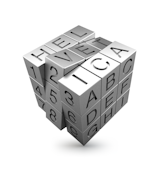The Wave House sits directly next to the Sandcastle on the sands of Malibu. When Gesner created it in 1957, the design had originally been born when he was surfing and drew the shape of the house on his surfboard with a piece of grease pencil, and would transfer it to a drawing pad and vellum when he returned to the sand. He found inspiration in the way a giant wave embraces you—and how you become a part of it. The roof is lined with copper shingles layered in a way that gives the impression of fish scales.
The main house rotates around a large fireplace, where Gesner’s late wife Nan Martin used to perform for friends and family. Surrounding this gathering zone is old growth redwood cut in the 1800s, reused telephone poles, and reclaimed wood that’s been turned into door frames, window frames, and floors.
Gesner (shown here in the circular main house) welcomed us in to explore his home. He told us how he believes round design is one of the easiest and best ways to build so that you don’t lose any space without sacrificing a strong structure. “Everything else in the universe is round and exists in cycles—plants, the sun, the way the planets orbit,” he continued.
She's not allowed on the couch...I'll give you the name of her trainer #you'rewelcome
Comfort in #Eames
607 more saves



































